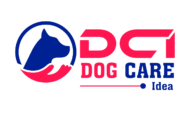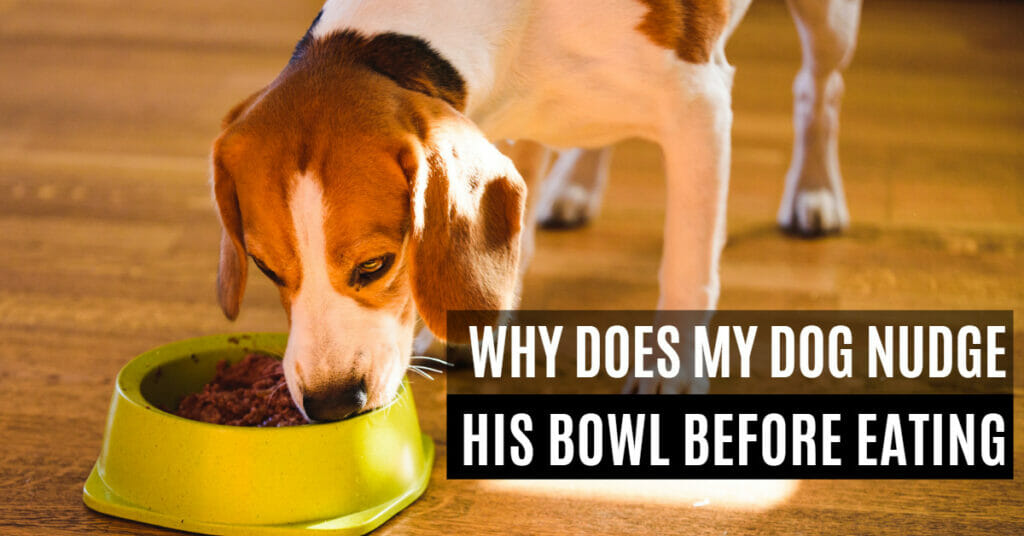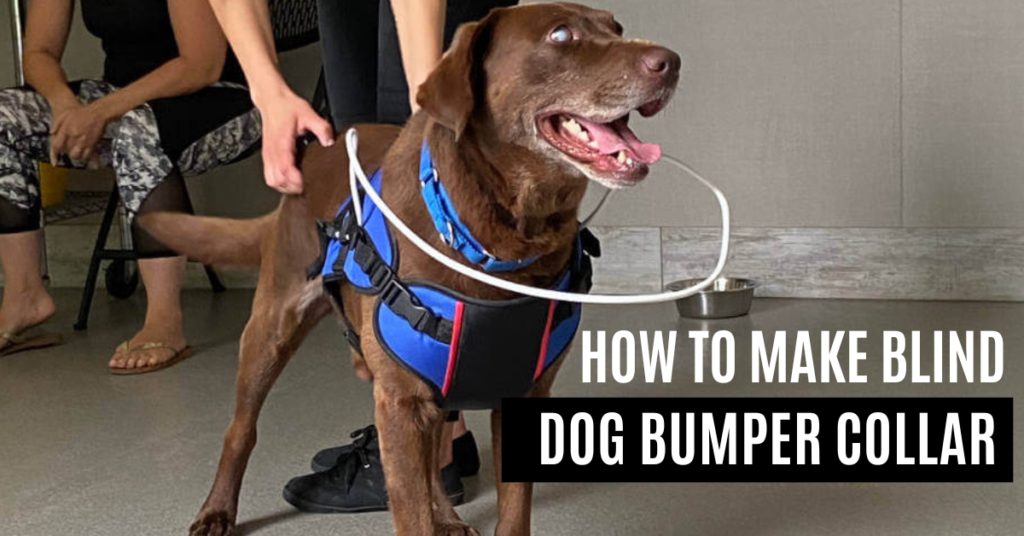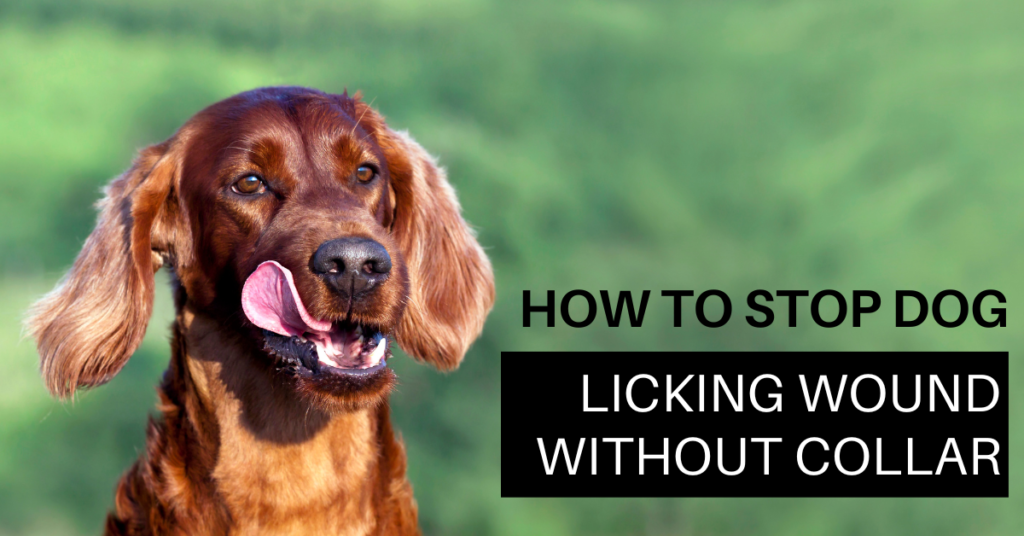Do you ever wonder why your furry friend insists on nudging their food bowl before diving in? It’s a common behavior among dogs that may seem cute or even annoying, but it actually has a purpose.
Dogs may nudge their food bowl before eating to reposition the food, stimulate their appetite, or mark their territory. It’s a common behavior rooted in natural instincts.
From signaling hunger to expressing excitement, there are several reasons why does my dog nudge his food bowl before eating?
Now, we’ll explore the science behind this quirky behavior and give you some tips on how to address it if needed.
Why Do Dogs Nudge Their Food Bowls? 8 Possible Reasons
Dogs may nudge their food bowls for several reasons:
1- Stashing
One possible reason your dog may be nudging their food bowl is to stash away some extra kibble for later. This behavior harkens back to dogs’ wild ancestors, who were scavengers and often had to hide their food from potential competitors.
2- Curiosity
Dogs are naturally curious creatures, so it’s possible that your pup is simply investigating their food bowl before digging in. They may be sniffing around or trying to get a better look at what’s inside.
3- Attention
Some dogs learn early on that nudging their food bowl will get them attention from their human companions. If you tend to respond when your dog does this, they may continue the behavior as a way of getting your focus.
4- Boredom
Just like people can engage in mindless snacking out of boredom, dogs may nudge their food bowls as a form of entertainment or distraction.
5- They Don’t Feel Like Eating
Sometimes dogs simply aren’t hungry or don’t feel like eating at the moment, even if there’s tasty food right in front of them.
6- Food Bowl
The design and placement of your dog’s food bowl can also play a role in whether or not they nudge it before eating. For example, if the bowl slides around easily on tile floors or makes noise when bumped against hard surfaces, your pup might accidentally push it while trying to eat.
7- Breed-Specific Traits
Certain breeds have been known to exhibit specific behaviors related to feeding time – for example, Labrador Retrievers are notorious for being “food-focused” and might be more likely than other breeds to nudge their bowls before chowing down.
8- Dental Problems:
Finally yet importantly, dogs with dental problems such as gum disease may experience discomfort while eating which leads them frequently touch the affected area with any object nearby including their own paws, bowls, etc.
Dogs are descendants of wolves
Dogs are fascinating creatures that humans have domesticated for thousands of years.
However, as much as we love our furry friends, it’s important to remember that they still share many characteristics with their wild ancestor, the wolf.
In fact, dogs are believed to have descended from wolves over 15,000 years ago. While dogs may look and behave differently than wolves today, they still carry many of the same traits and instincts.
For example, wolves and dogs are pack animals relying on social hierarchies for survival. This is why establishing yourself as the “alpha” in your dog’s life is essential for their training and wellbeing.
Additionally, like their wolf ancestors, dogs have a strong instinct regarding food. This may be why some dogs nudge or paw at their food bowls before eating – it could be an attempt to bury or hide their food like a wolf would in the wild.
Understanding your dog’s ancestry can help you better understand their behavior and needs as pets. And while they may not need to hunt for prey anymore or fend off predators like wolves do in the wild, we can still learn a lot about our furry companions by looking back at where they came from.
Dog’s sense of smell
Dogs has an incredible sense of smell that is far more advanced than ours. They have up to 300 million olfactory receptors in their noses compared to our measly 6 million! This means they can detect odors at concentrations as low as one part per trillion, making them fantastic hunters and trackers.
When it comes to food, dog’s sense of smell plays a big role in how they perceive it. Even before you open the bag or can of dog food, your furry friend will likely be able to smell it from across the room.
When you place the bowl down, they may nudge it not just because they’re excited but also because they want to get a better whiff.
Moreover, dogs use their sense of smell not only for finding food but also for determining its quality and freshness.
Dogs are known for being picky eaters and might refuse stale or spoiled food even if we can’t tell there’s anything wrong with it.
In fact, some breeds were specifically bred for their exceptional smelling abilities, like Bloodhounds which were used by law enforcement agencies worldwide for tracking fugitives and missing persons.
So next time you see your pup sniffing around his food dish or nudging it before eating, remember that he’s simply using his amazing sense of smell to fully experience his meal!
Other ways dogs show they’re ready to eat
Dogs are known for their love of food, and they have unique ways of showing their excitement for mealtime.
- One way dogs show they’re ready to eat is by wagging their tails vigorously when they see or smell food. This tail-wagging behavior is a sign of happiness and excitement.
- Another way dogs signal that it’s time to eat is by barking or whining.
- Some dogs may even jump up and down in front of their feeding area as a form of anticipation.
- Dogs also use body language to communicate that they’re ready for food. They may lick their lips, yawn, or pace around the room until you give them their meals.
- Some breeds like Labradors are notorious for drooling excessively in anticipation of a meal.
- While some others like Greyhounds might show more subtle signs such as stretching out completely with legs extended forward indicating relaxation before eating.
It’s important to note that if your dog suddenly starts showing an increased interest in food or changes his routine, it could be a sign of an underlying health issue. Always consult with your veterinarian if you notice any unusual behaviors from your furry friend at mealtimes!
How to stop your dog from nudging his food bowl
If your dog’s constant nudging of his food bowl is driving you crazy, there are ways to put a stop to this behavior. Here are some tips:
1- Set meal times:
Stick to a feeding schedule and give your dog his meals at specific times each day.
2- Remove the bowl:
If your dog repeatedly nudges the bowl even after eating, try taking it away once he’s done with his meal.
3- Use a puzzle feeder:
A puzzle feeder can provide mental stimulation for your pup while also slowing down their eating pace.
4- Ignore Nudging Behavior:
While it may be tempting to reward or scold your dog when he nudges the bowl, ignoring him will eventually teach him that the behavior won’t get him what he wants.
5- Teach Basic Obedience Commands:
Teaching basic commands like sit, stay, and come can help redirect your dog’s focus from begging for food to following instructions.
By implementing these tips consistently over time, you can train your furry friend to curb their food-bowl-nudging habit!
Conclusions
There are various reasons why dogs may nudge their food bowls before eating, including affection, submission, boredom, or dental problems. To address this behavior, establish regular feeding intervals, add variety to their diet, or provide a new, more engaging food bowl.
Understanding and monitoring your dog’s eating habits is crucial for their overall well-being and happiness as they are descendants of wolves with unique instincts and behaviors. By providing proper care and attention, you can ensure their long and healthy lives filled with love.
FAQs:
Why does my dog rub his nose around his food bowl?
Dogs may rub their nose around their food bowl to mark their territory or explore for any leftover food particles.
Is it normal for dogs to drop their food while chewing?
Yes, it is normal for dogs to drop their food while chewing, especially if they are eating something large or messy.
Should I take my dogs food away if he doesn’t eat it?
No, you should not immediately take away your dog’s food if he doesn’t eat it.
Do dogs know when they’ve eaten enough?
Yes, dogs have the ability to know when they’ve eaten enough.
What food should you avoid after a dog bite?
After a dog bite, it is best to avoid foods high in sugar, spicy foods, and acidic foods to promote healing and prevent further irritation.



